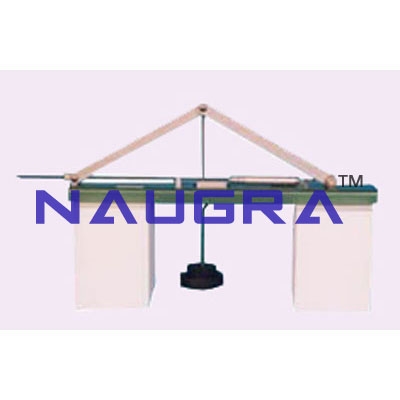- Civil Lab Mechanical Lab Engineering Lab Equipments
- sales@didacticlabequipments.com

CAT NO: DIDACTICNLE-Export-056011
Toggle Joint Apparatus Engineering Lab Training Systems.
Features
Low cost, effective teaching.
Self-contained.
Bench mounted.
Direct measurement of horizontal reaction.
Angle of toggle variable.
Demonstrates application of.
velocity diagrams.
Three year warranty.
Range of Experiments
To determine the experimental horizontal reaction due to loading.
To compare with theoretical predictions, such as the velocity diagram technique.
To assess the effect of the toggle angle.
Description
This
apparatus is designed to evaluate forces within a toggle mechanism.
Load is applied to the two pairs of links by a hanger suspended from
their connecting pivot. One end of the links is pivoted to a base, and
the other end is able to move sideways on low friction ball bearing
wheels. The moving links are restrained by a horizontal spring balance,
which measures the horizontal reaction directly. The angle of the toggle
can be varied. Adjustment is provided for returning the geometry of the
loaded toggle to its original unloaded state before taking
measurements. The supporting blocks are not supplied.
There are
many ways in which the forces can be determined theoretically. The
instruction sheet provided with the apparatus takes the opportunity to
introduce the use of velocity diagrams to solve essentially static
problems by considering virtual motion. However, other techniques can be
used if desired.
This equipment is part of a range designed to
both demonstrate and experimentally confirm basic engineering
principles. Great care has been given to each item so as to provide wide
experimental scope without unduly complicating or compromising the
design. Each piece of apparatus is self-contained and compact. Setting
up time is minimal, and all measurements are made with the simplest
possible instrumentation, so that the student involvement is purely with
the engineering principles being taught. A complete instruction manual
is provided describing the apparatus, its application, experimental
procedure and typical test results.
